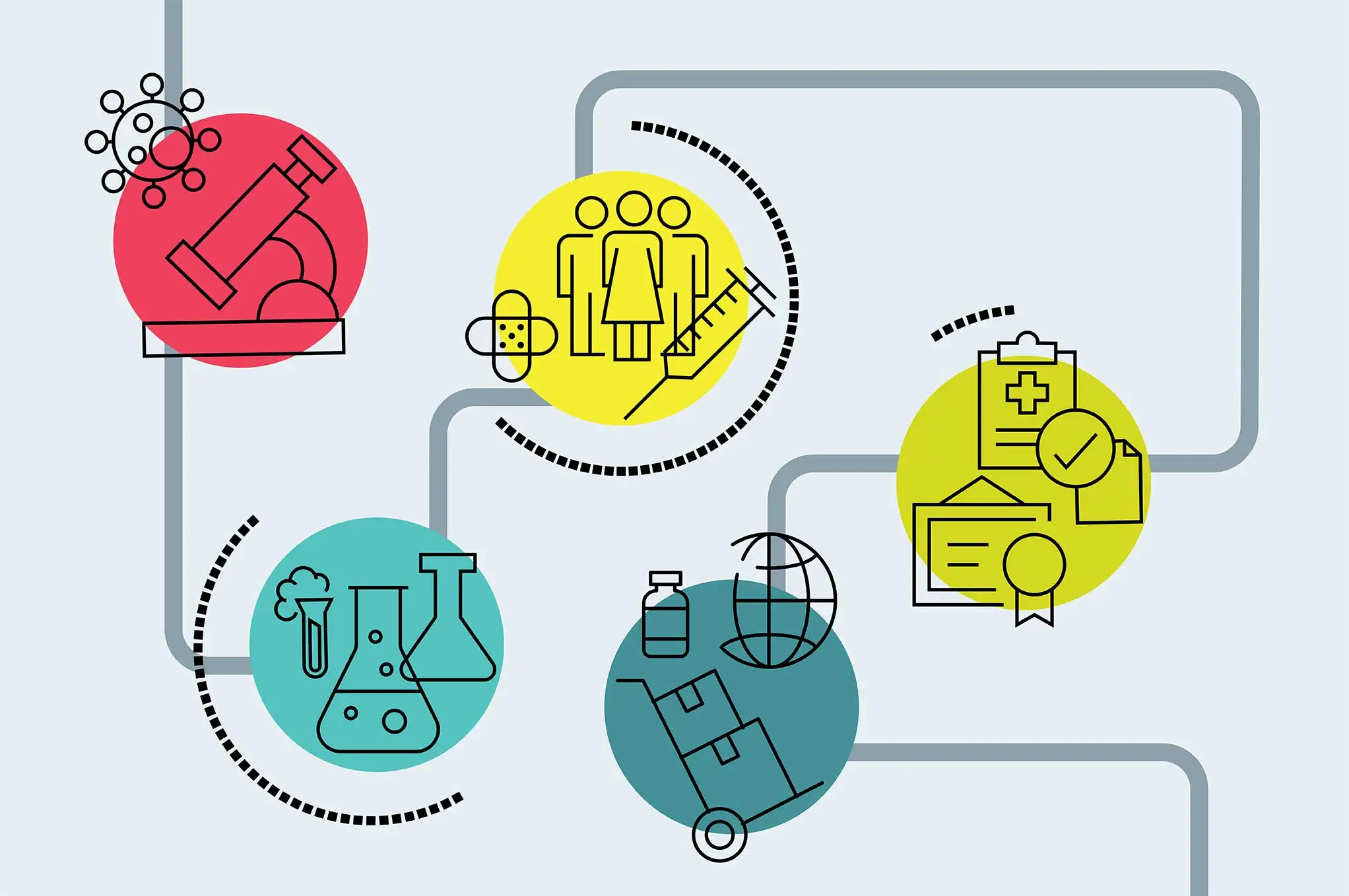The 100-Day Vaccine

The first vaccine for COVID-19 broke records: Only 342 days passed between the virus being sequenced and an FDA-authorized vaccine. Looking back, researchers now wonder whether it could be done even more quickly.
Speedier vaccine development for COVID would have saved many lives. At 100 days, in April 2020, about 2.3 million people had been infected worldwide. By the time of the first vaccine approval, in December, that number had skyrocketed to 75 million.
“There’s much more we can do,” says Melanie Saville, executive director of vaccine research and development at the Coalition for Epidemic Preparedness Innovations, a foundation that focuses on vaccines and other biological countermeasures for epidemic and pandemic diseases. Saville and her colleagues recently published a roundup of ideas showing how streamlining current techniques could shorten the time to only 250 days.
In an emergency, that timeline might be whittled down to just 100 days, as outlined here. “But that has to be in a situation where you have a highly lethal, highly contagious virus,” Saville cautions, noting the benefits of a vaccine would have to clearly outweigh increased risks.